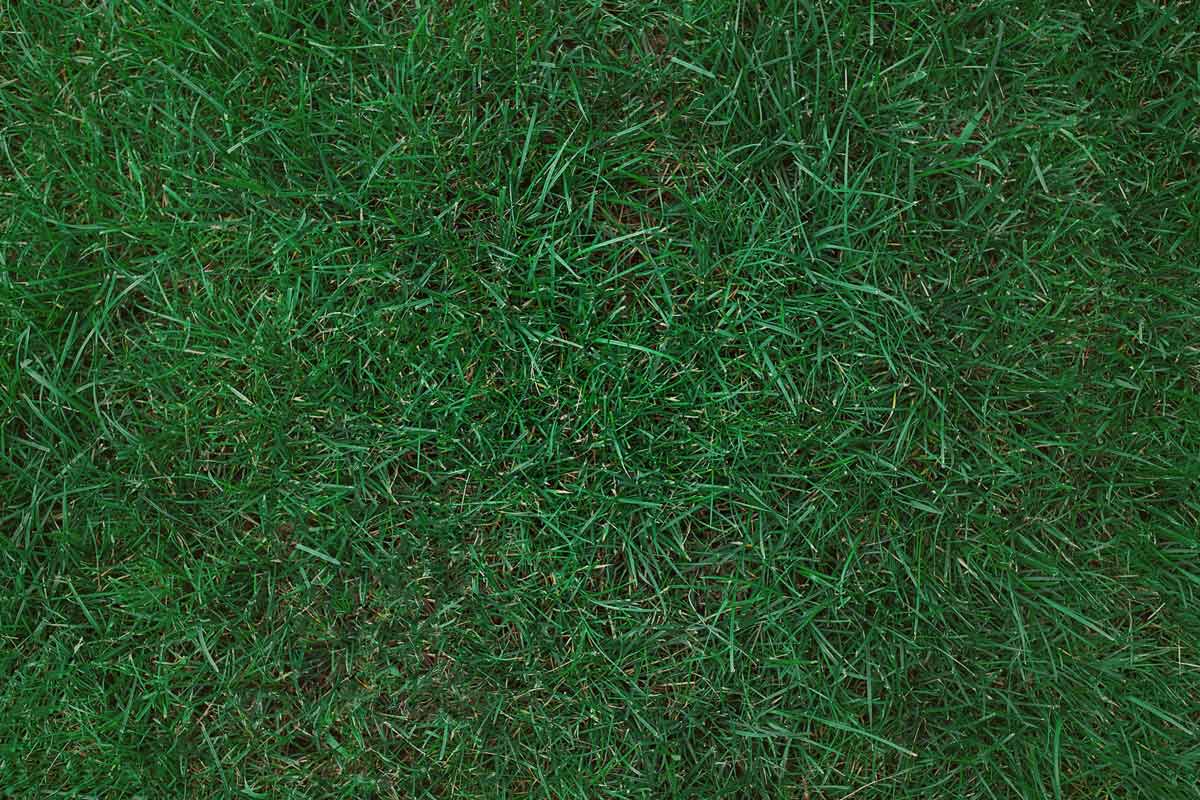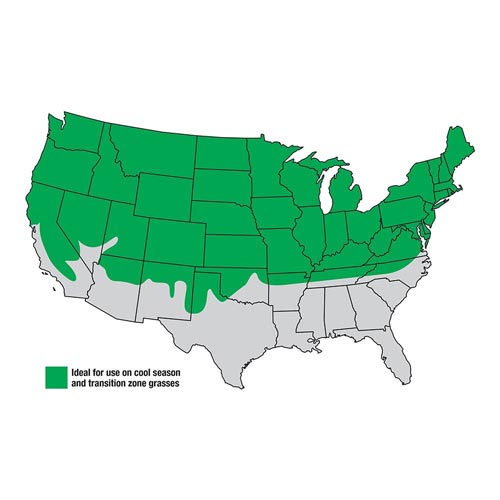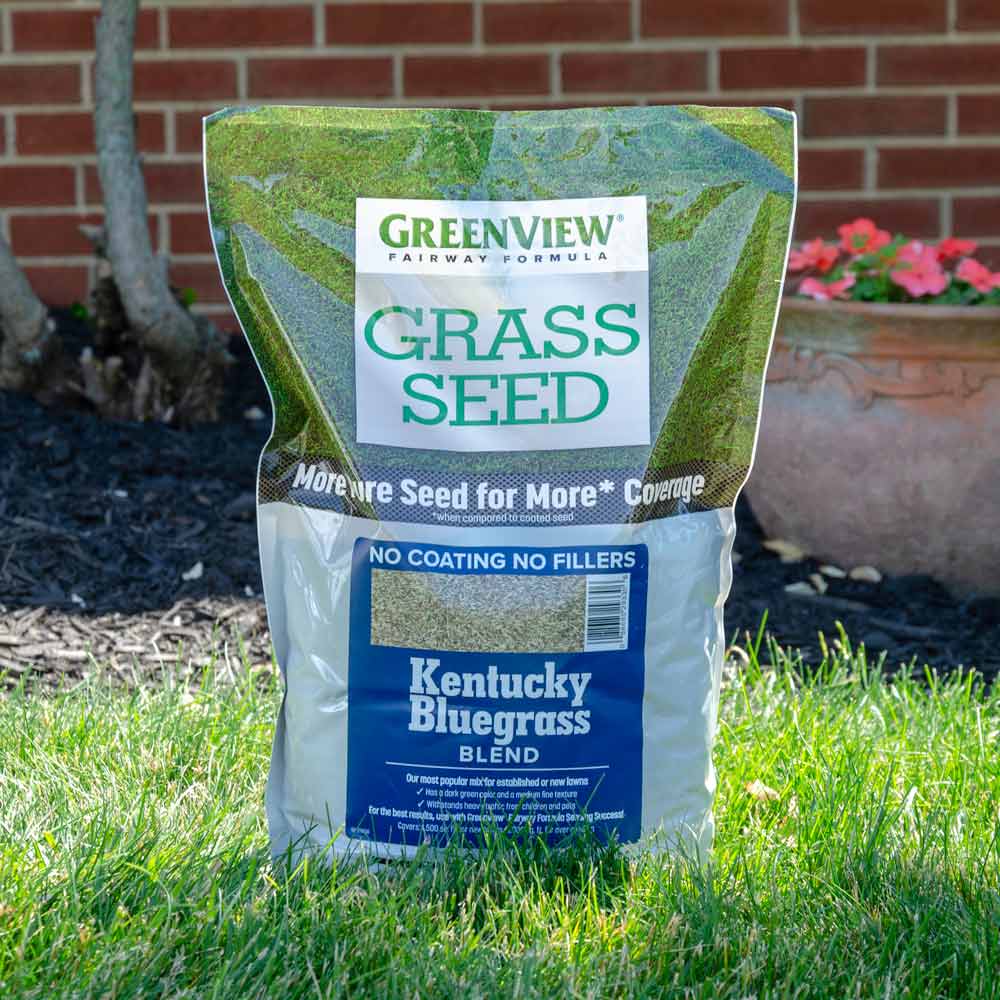 For many, the draw of Kentucky bluegrass is its thin blades, as opposed to the thick blades of many other grass types.
For many, the draw of Kentucky bluegrass is its thin blades, as opposed to the thick blades of many other grass types.
KacieBuccieri / iStock / Getty Images Plus
While it isn’t from Kentucky and won’t give you a blue lawn, this hardy lawn grass is a popular cool-season grass choice. Kentucky bluegrass is a widely adapted species which makes it a good choice for athletic fields, home lawns, and golf courses. Its dark green color and wispy, fine texture contribute to its nickname as the king of lawn grasses.
Kentucky bluegrass is a bit harder to establish than other grass types. It has more air and temperature needs and it will require some patience, as it takes between 14-28 days to germinate, but it is definitely worth the work and wait.
How It Grows
Kentucky bluegrass is self-spreading and able to recover from damage because it grows by underground primary lateral stems called rhizomes. These rhizomes grow out from the main plant and form a new plant, resulting in the development of a dense cover.
Kentucky bluegrass is the only cool-season grass that grows through self-spreading, making it a great option for filling in bare areas. Self-spreading allows Kentucky bluegrass to thicken a lawn in a way that other grass types can’t, which is why it is ideal for overseeding or use in conjunction with other grass types.
Where It Grows
Given that Kentucky bluegrass is a cool-season grass, it is best suited for the Northern two-thirds of the United States. It can grow in the transition zone that covers the middle third of the U.S., but this will depend upon the weather and conditions of the given region. As a good rule of thumb, it is handy to know that cool-season grasses grow best between 60 to 75 degrees.
 The green area displays the regions where cool-season grasses, like Kentucky bluegrass, can be found.
The green area displays the regions where cool-season grasses, like Kentucky bluegrass, can be found.
Fast Facts
Here is a rundown of the main characteristics of this tough turf type:
- Drought Tolerance: Kentucky bluegrass has shallow roots, so while it grows best in full sun, it has a medium tolerance for drought and will quickly go dormant without enough watering.
- Traffic Tolerance: The spreading rhizomes that make up the underground growth of Kentucky bluegrass makes it a great option for high traffic areas, giving this grass a medium traffic tolerance.
- Shade Tolerance: Kentucky bluegrass grows best in full sun, giving it a medium to low tolerance for shade, though some varieties can tolerate light shade.
- Fertilizing Requirements: The deep green color of Kentucky bluegrass often needs fertilizer to maintain its brilliance, contributing to this grass type’s medium fertilizer requirement. To determine proper fertilizer and lime needs, a soil pH test should be performed on the lawn itself. A good soil pH range for this lawn type is between six and seven.
- Leaf Texture: This green to dark green turfgrass has boat-shaped grass tips that are soft on bare feet, but tough enough for use in well-trodden areas.
- Mowing Height: Kentucky bluegrass should be kept at a short to medium height to promote dense growth. In the summer months though, keeping this grass type at an increased height, around three to four inches, can help reduce the effects of drought.
- Cold Tolerance: Of all the cool-season grasses, Kentucky bluegrass is the most cold-tolerant. Its medium cold tolerance allows it to withstand temperatures that would destroy most other cool-season grasses.
- Heat Tolerance: The greatest environmental enemy of Kentucky bluegrass is heat, resulting in its medium heat tolerance rating. With a shallow root system that simply can not hold as much water as other grass types, Kentucky bluegrass requires more water in the summer months and will grow best in regions where the temperature does not exceed 75 degrees.
- Thatching Tendency: Kentucky bluegrass has a low to medium tendency to produce thatching. Though it produces thatching more often than Tall Fescue or Perennial Rye varieties, most Kentucky bluegrass varieties do not thatch so long as they are not bred for vigorous growth.
- Acid Soil Tolerance: Given that its preferred pH level is between six to seven, Kentucky bluegrass has a medium acid soil tolerance, meaning it is somewhat tolerant of lower pH levels. Find out your soil’s pH level to determine if it is the right level for this grass type by performing a soil pH test.
How to Care for It
The best time to plant Kentucky bluegrass is during the fall season, as the lower temperatures and frequent rainfall create a suitable environment for this grass type. After seeding, Kentucky bluegrass will grow much slower than other grass types, taking around 14-28 days to germinate, but it will spread quickly once established because of the rhizomes. The key when growing Kentucky bluegrass is to be patient; the results will definitely be worth it.
Once your Kentucky bluegrass is established, following mowing, watering, and fertilizing practices according to its characteristics will ensure a beautiful lawn. This means keeping the grass mowed to about two to two and a half inches in the cooler months, and two to four inches in the warmer months; providing the grass with one inch of water during moderate temperatures and two inches during the summer; and finally, fertilizing the grass as needed to maintain density and deep color.

If you’re considering Kentucky bluegrass for your lawn, there is no better choice than GreenView Pure Grass Seed Kentucky Bluegrass Blend. This no coating, no filler grass seed blend is perfect for seeding new grass or overseeding grass that is already established to promote a beautiful, thick, and lush green lawn. Not only that, but it’s disease resistant and 99.9% weed-free, meaning you won’t have to worry about your grass becoming subject to disease damage or weed infestation. So enjoy the benefits of a dense and durable Kentucky bluegrass lawn that you can be proud of with GreenView Fairway Formula’s Kentucky Bluegrass Blend.
By Darby Seymour, Marketing Intern